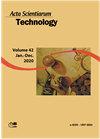基于深度学习和特征选择的雾计算环境集成入侵检测模型
IF 0.6
4区 综合性期刊
Q3 MULTIDISCIPLINARY SCIENCES
引用次数: 1
摘要
被称为雾计算的分散架构位于云和数据生成设备之间。它充当云服务和物联网设备之间的管道。为了减少延迟,雾计算可以为时间敏感的物联网应用处理大量的计算。雾层同时容易受到许多攻击。为了保护雾节点免受攻击,雾计算范式可能适合于基于深度学习的入侵检测系统。本文利用传统CNN和IDS-AlexNet模型两种深度学习模型(Ensemble CNN- ids with Random Forest),在雾计算环境下提出了一种基于深度学习和随机森林高效特征选择的集成入侵检测模型,并证明该模型具有较高的攻击检测精度。各自的模型实现在UNSW-NB15数据集上展示,该数据集由9类攻击组成,即Fuzzers, Analysis,后门,DoS, exploit, Generic, Reconnaissance, Shellcodes和蠕虫。采用深度学习和高效特征选择相结合的集成入侵检测模型通过使用不同的分类器进行入侵检测,证明了该模型的准确性和有效性。我们提出的模型在攻击检测方面的准确率高达97.5%,优于其他各种传统和最新的模型。本文章由计算机程序翻译,如有差异,请以英文原文为准。
Combined Ensemble Intrusion Detection Model using Deep learning with Feature Selection for Fog Computing Environments
Decentralized architecture known as fog computing is situated between the cloud and data-producing devices. It acts as a conduit between cloud services and IoT devices. In order to reduce latency, fog computing can handle a significant amount of computation for time-sensitive IoT applications. The Fog layer is simultaneously vulnerable to numerous assaults. To defend the fog nodes from attacks, fog computing paradigms may be suited for deep learning-based intrusion detection systems (IDS). In this paper, a combined Ensemble Intrusion Detection Model using Deep learning with Efficient Feature Selection using Random forests is proposed for Fog Computing Environments by using two deep learning models of traditional CNN and IDS-AlexNet model called Ensemble CNN-IDS with Random Forest and showed this model gives high accuracy of attack detection. The respective model implementations demonstrated on the UNSW-NB15 dataset that consists of 9 classes of attacks namely Fuzzers, Analysis, Backdoors, DoS, Exploits, Generic, Reconnaissance, Shellcodes and Worms. The proposed combined Ensemble Intrusion Detection Model using Deep learning with Efficient Feature Selection for intrusions detection is shown to be accurate and efficient by using different classifiers. Our proposed model provides high the accuracy in attack detection of about 97.5% that it outperformed various other traditional and recent models.
求助全文
通过发布文献求助,成功后即可免费获取论文全文。
去求助
来源期刊

Acta Scientiarum-technology
综合性期刊-综合性期刊
CiteScore
1.40
自引率
12.50%
发文量
60
审稿时长
6-12 weeks
期刊介绍:
The journal publishes original articles in all areas of Technology, including: Engineerings, Physics, Chemistry, Mathematics, Statistics, Geosciences and Computation Sciences.
To establish the public inscription of knowledge and its preservation; To publish results of research comprising ideas and new scientific suggestions; To publicize worldwide information and knowledge produced by the scientific community; To speech the process of scientific communication in Technology.
 求助内容:
求助内容: 应助结果提醒方式:
应助结果提醒方式:


